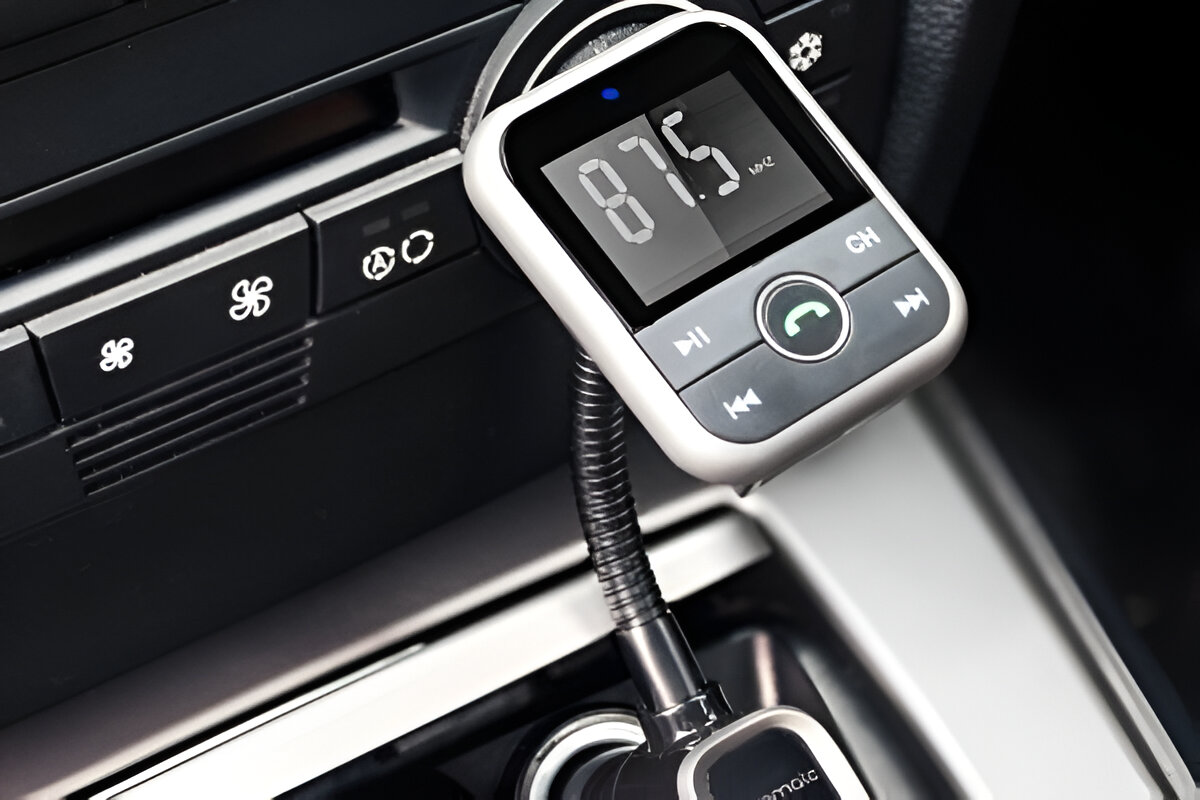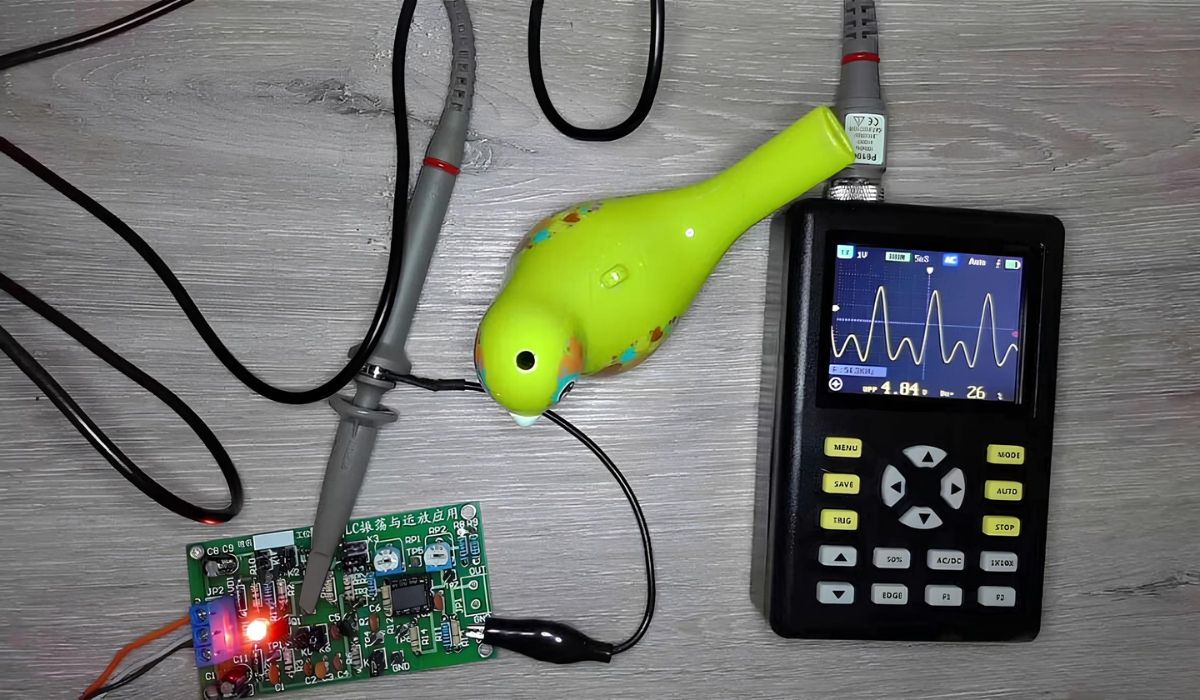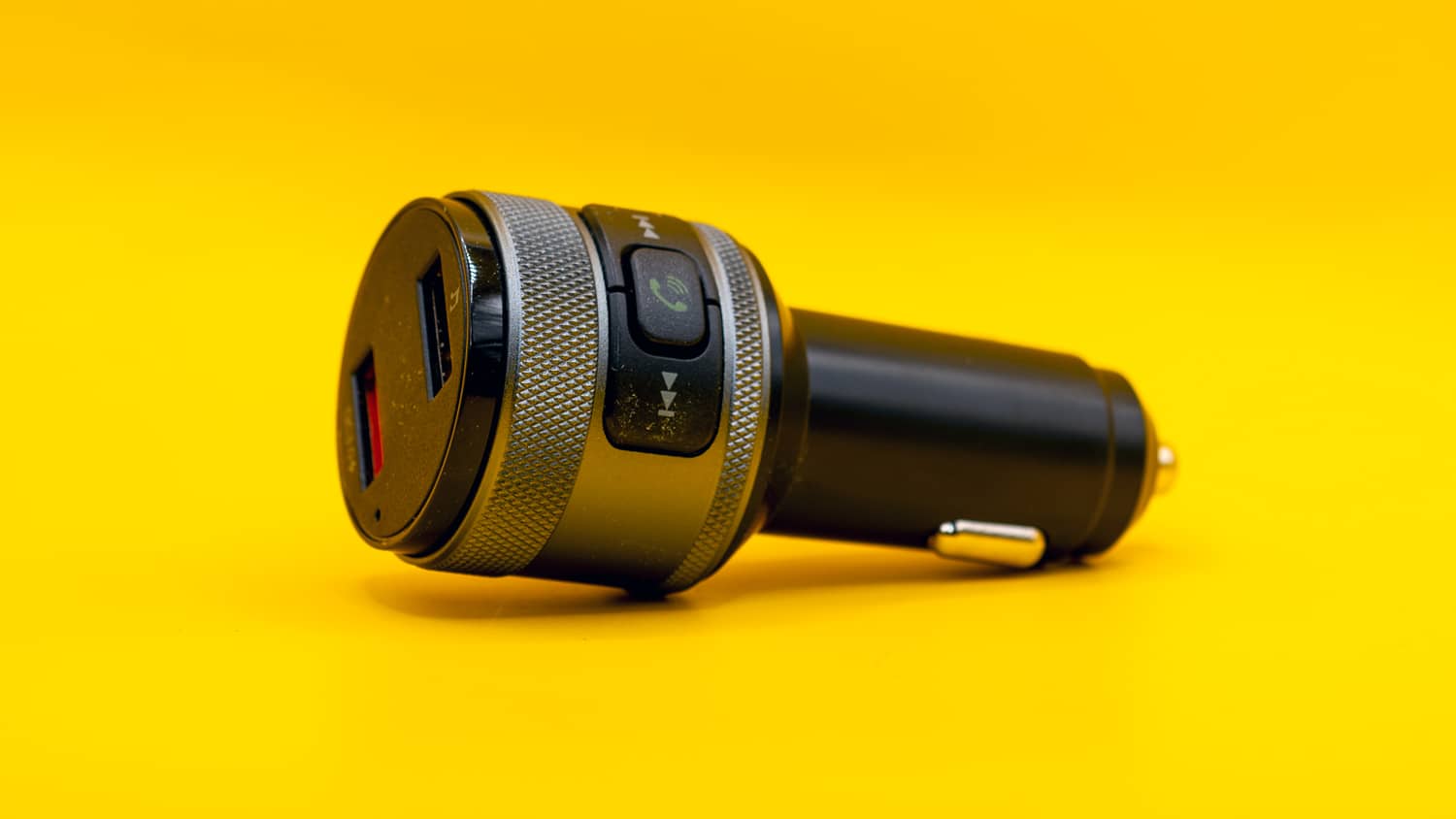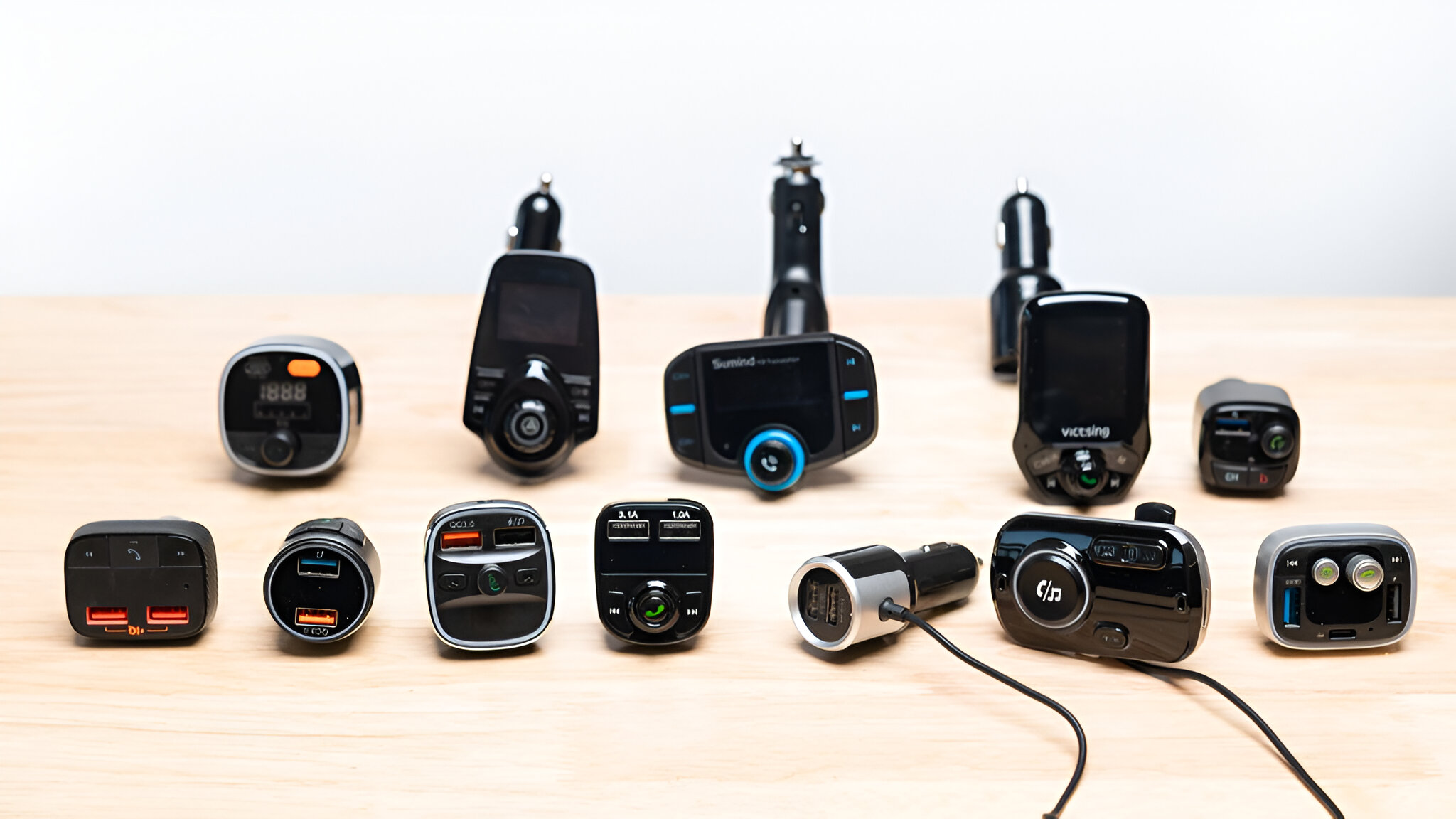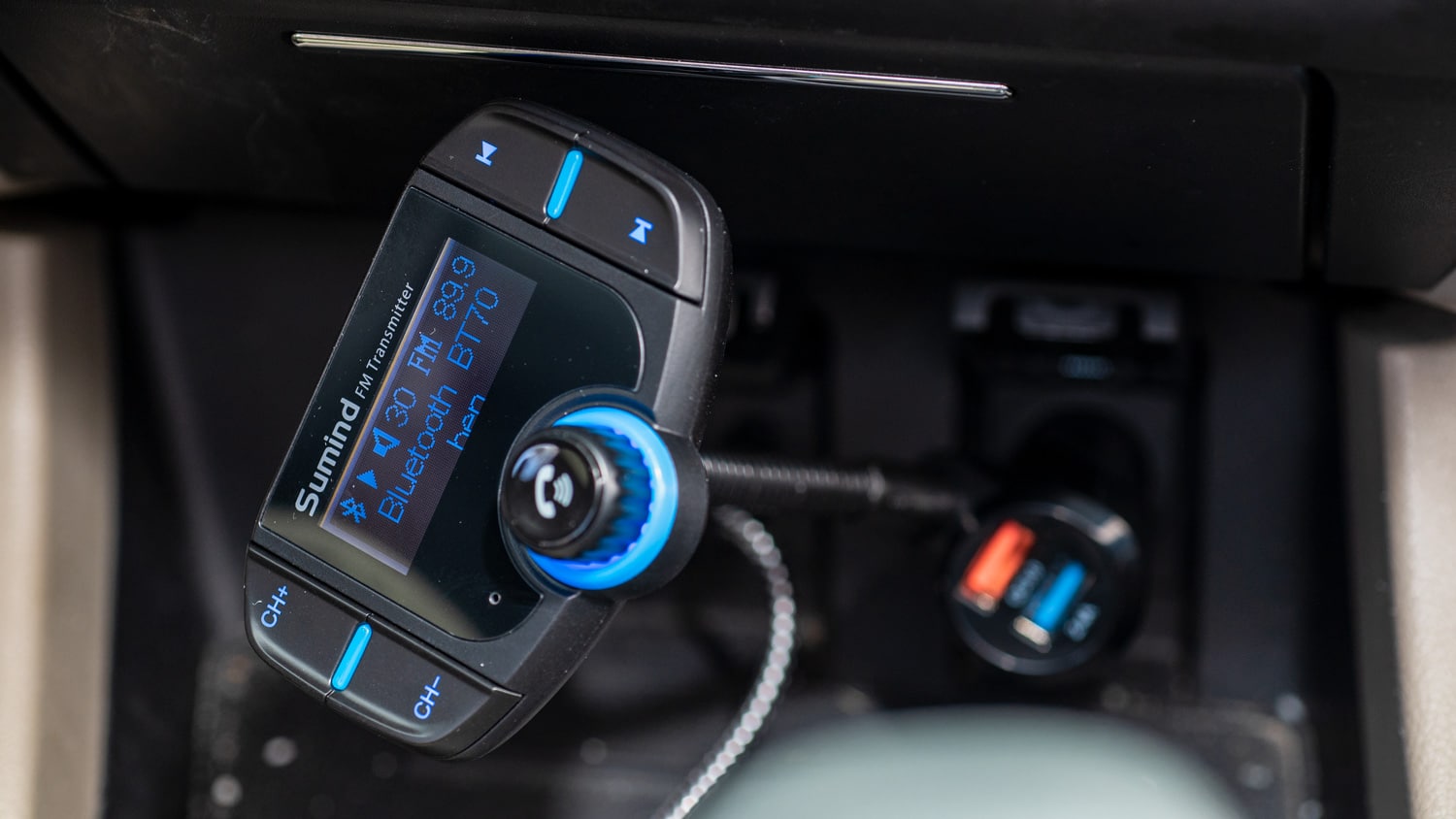Introduction
FM transmitters are fascinating devices that play a crucial role in modern communication and entertainment systems. These remarkable gadgets have a wide range of applications, from broadcasting music in a car to transmitting critical information in emergency situations. Understanding the functions and applications of FM transmitters is essential for anyone keen on delving into the world of wireless communication technology.
The intricacies of FM transmitters may seem daunting at first, but with a bit of insight, their significance becomes abundantly clear. This article aims to demystify the workings of FM transmitters, shedding light on their various types, applications, as well as their advantages and disadvantages. By the end of this exploration, you will gain a deeper understanding of how these devices function and the diverse ways in which they are utilized in our everyday lives.
Whether you are a tech enthusiast, a student studying communication systems, or simply someone curious about the technology that powers radio broadcasts and wireless microphones, this article will serve as a comprehensive guide to FM transmitters. So, let's embark on this enlightening journey to unravel the mysteries of FM transmitters and gain a newfound appreciation for their impact on our interconnected world.
What is an FM Transmitter?
An FM transmitter is a device designed to convert audio signals into radio frequency (RF) signals, which can then be transmitted wirelessly to an FM receiver. This technology enables the wireless transmission of audio content, making it a fundamental component in various communication and entertainment systems. FM transmitters are commonly used in radio broadcasting, wireless microphones, and car audio systems, among other applications.
At its core, an FM transmitter consists of several key components, including a modulator, oscillator, and amplifier. The modulator is responsible for encoding the audio input into an FM signal, while the oscillator generates the carrier frequency that the audio signal will be modulated onto. The amplifier then boosts the signal to the desired power level for transmission. This intricate process allows the FM transmitter to convert the audio signal into a format that can be efficiently transmitted over the airwaves.
One of the defining features of FM transmitters is their ability to transmit stereo audio signals, providing high-quality sound reproduction. This capability has made FM transmitters a popular choice for broadcasting music in various settings, such as in-car entertainment systems and portable audio devices. Additionally, FM transmitters are utilized in wireless communication systems to transmit voice and data over short distances, offering a convenient and reliable means of wireless connectivity.
In recent years, advancements in FM transmitter technology have led to the development of compact and portable transmitters, catering to the growing demand for wireless audio solutions. These miniature transmitters are often used in conjunction with smartphones and other portable devices, allowing users to wirelessly stream audio to nearby FM receivers. This versatility has expanded the practical applications of FM transmitters, making them indispensable in modern audio communication and entertainment setups.
In essence, an FM transmitter serves as a bridge between audio sources and FM receivers, enabling the wireless transmission of audio content with remarkable clarity and fidelity. Its ability to convert audio signals into RF signals has revolutionized the way we consume and distribute audio content, making FM transmitters an integral part of our interconnected world.
How Does an FM Transmitter Work?
An FM transmitter operates on the principle of frequency modulation, where the audio signal alters the carrier frequency of the transmitted radio waves. This process involves several intricate stages that collectively enable the conversion of audio signals into RF signals for wireless transmission.
The first step in the operation of an FM transmitter involves the modulation of the audio signal. The audio input, typically in the form of an electrical signal, undergoes modulation to encode the variations in the audio waveform onto the carrier frequency. This is achieved through the use of a modulator, which adjusts the frequency of the carrier signal in accordance with the amplitude and frequency of the audio input. As a result, the audio signal becomes embedded within the carrier frequency, ready for transmission.
Following modulation, the oscillator generates the carrier frequency that will carry the modulated audio signal. This oscillator produces a stable and precise RF signal at the desired frequency, ensuring that the transmitted signal remains within the designated frequency band. The carrier frequency serves as the medium through which the modulated audio signal is propagated, allowing it to travel through the airwaves to the FM receiver.
Once the audio signal is modulated onto the carrier frequency, the amplified signal is then transmitted through an antenna. The amplifier boosts the signal to the required power level, ensuring that it can cover the intended transmission range with sufficient strength. This amplified signal is then fed to the antenna, which radiates the RF signal into the surrounding space, ready to be received by compatible FM receivers.
At the receiving end, an FM receiver demodulates the received RF signal, extracting the original audio signal from the carrier frequency. This process allows the transmitted audio content to be reproduced, enabling listeners to enjoy the wireless transmission of music, speech, or other audio content.
In essence, the operation of an FM transmitter revolves around the precise modulation of audio signals onto a carrier frequency, followed by amplification and transmission via an antenna. This seamless process enables the wireless transmission of audio content, making FM transmitters indispensable in a wide array of communication and entertainment applications.
Types of FM Transmitters
Portable FM Transmitters
Portable FM transmitters are compact, lightweight devices designed for on-the-go audio transmission. They are commonly used in conjunction with smartphones, MP3 players, and other portable audio devices to wirelessly stream audio content to nearby FM receivers. These transmitters are favored for their convenience and versatility, allowing users to create impromptu wireless audio setups in a variety of settings, such as in cars, at outdoor events, or during exercise activities. Portable FM transmitters often feature built-in rechargeable batteries, making them ideal for mobile applications where a reliable power source may not be readily available.
Professional FM Transmitters
Professional FM transmitters are high-performance devices engineered for commercial radio broadcasting and professional audio applications. These transmitters are designed to deliver robust and reliable performance, catering to the stringent requirements of professional broadcasting stations and audio production facilities. Professional FM transmitters are available in a wide range of power outputs, from a few watts for local community radio stations to several kilowatts for major broadcast networks. They are equipped with advanced features such as built-in audio processing, remote monitoring and control capabilities, and redundant systems to ensure uninterrupted operation.
Vehicle FM Transmitters
Vehicle FM transmitters, also known as car FM transmitters, are specifically designed for integrating audio devices with car stereo systems. These transmitters enable drivers and passengers to wirelessly transmit audio from portable devices, such as smartphones or MP3 players, to the car's FM radio for playback through the vehicle's speakers. Vehicle FM transmitters typically feature compact designs and easy-to-use interfaces, allowing for seamless integration with various car audio setups. They provide a convenient solution for enjoying personalized audio content while on the road, making long drives more enjoyable and entertaining.
Low Power FM Transmitters
Low power FM transmitters are characterized by their modest output levels, typically ranging from a few milliwatts to a few watts. These transmitters are commonly used for short-range applications, such as wireless microphones, personal audio broadcasting, and in-venue audio distribution. Low power FM transmitters are favored for their simplicity and cost-effectiveness, making them suitable for small-scale broadcasting and localized audio transmission. They are widely utilized in educational institutions, houses of worship, event venues, and other settings where a limited coverage area is sufficient for the intended audio distribution.
Miniature FM Transmitters
Miniature FM transmitters are ultra-compact devices designed for discreet and portable audio transmission. These transmitters are often used in covert communication, surveillance, and personal audio broadcasting applications. Their diminutive size and low power consumption make them well-suited for clandestine operations and covert audio monitoring. Miniature FM transmitters are equipped with features such as adjustable frequency settings, voice activation capabilities, and inconspicuous designs, allowing for inconspicuous deployment in various covert communication scenarios.
In summary, the diverse types of FM transmitters cater to a wide range of applications, from portable audio streaming to professional broadcasting, demonstrating the versatility and adaptability of FM transmitter technology in meeting the diverse needs of modern communication and entertainment systems.
Applications of FM Transmitters
FM transmitters find extensive applications across various domains, showcasing their versatility and adaptability in facilitating wireless audio transmission and communication. The following are some notable applications of FM transmitters:
Radio Broadcasting
FM transmitters serve as the backbone of radio broadcasting, enabling the transmission of music, news, and entertainment to a wide audience. Broadcasting stations utilize professional-grade FM transmitters to deliver high-quality audio content over the airwaves, reaching listeners across local, regional, and national territories. The widespread adoption of FM transmitters has played a pivotal role in shaping the radio broadcasting landscape, offering listeners a diverse range of programming and fostering cultural exchange.
Wireless Microphones
In the realm of live performances, events, and public speaking engagements, wireless microphones equipped with FM transmitters provide performers and presenters with the freedom to move and communicate without being tethered by cables. FM transmitters integrated into wireless microphone systems ensure reliable and interference-free transmission of vocal and instrumental audio, enhancing the overall experience for both performers and audiences.
Car Audio Systems
Vehicle FM transmitters enable drivers and passengers to wirelessly connect their portable audio devices, such as smartphones and MP3 players, to the car's FM radio. This seamless integration allows for personalized music playback through the vehicle's speakers, enhancing the in-car entertainment experience during commutes and road trips.
Educational Institutions
Low power FM transmitters are commonly employed in educational institutions for internal communication, campus radio stations, and educational programming. These transmitters facilitate the dissemination of information, student-led broadcasts, and academic content within the campus environment, fostering a dynamic and engaging learning atmosphere.
Personal Audio Broadcasting
Miniature FM transmitters are utilized for personal audio broadcasting, offering individuals the means to create localized radio broadcasts, share audio content within small groups, or engage in hobbyist radio activities. These compact transmitters empower enthusiasts to explore the creative possibilities of audio transmission in personal and community settings.
Emergency Communication
During emergency situations and public safety operations, FM transmitters play a crucial role in disseminating critical information, emergency alerts, and instructions to the public. This application underscores the vital role of FM transmitters in facilitating effective communication during times of crisis and ensuring the safety and well-being of communities.
Portable Audio Streaming
Portable FM transmitters enable users to wirelessly stream audio from their mobile devices to nearby FM receivers, offering a convenient solution for on-the-go audio playback in outdoor settings, social gatherings, and recreational activities.
The widespread adoption of FM transmitters across these diverse applications underscores their significance in enabling seamless wireless audio transmission, communication, and entertainment in various contexts.
Advantages and Disadvantages of FM Transmitters
FM transmitters offer a range of benefits that contribute to their widespread adoption in communication and entertainment systems. However, they also present certain limitations that warrant consideration in their application.
Advantages
-
High-Quality Audio Transmission: FM transmitters are renowned for their ability to deliver high-fidelity audio transmission, making them an ideal choice for broadcasting music and speech with exceptional clarity and fidelity.
-
Stereo Sound Reproduction: FM transmitters support the transmission of stereo audio signals, allowing for immersive and dynamic sound reproduction, enhancing the listening experience for audiences.
-
Wireless Connectivity: By enabling wireless transmission of audio content, FM transmitters provide flexibility and mobility, allowing users to enjoy audio playback without the constraints of physical connections.
-
Interference Resistance: FM transmission exhibits robust resistance to noise and interference, ensuring reliable signal reception and minimizing disruptions in audio playback.
-
Wide Coverage Area: Professional-grade FM transmitters can reach a broad audience, making them suitable for radio broadcasting and public address systems in large venues and outdoor settings.
-
Ease of Integration: FM transmitters can be seamlessly integrated with existing audio systems, making them a convenient and versatile solution for expanding audio connectivity and distribution.
Disadvantages
-
Limited Transmission Range: FM transmitters, particularly low-power variants, are constrained by their limited transmission range, restricting their suitability for long-distance communication and large-scale broadcasting.
-
Regulatory Restrictions: The use of FM transmitters is subject to regulatory constraints and licensing requirements, necessitating compliance with legal frameworks governing radio frequency transmission.
-
Vulnerability to Multipath Distortion: In urban environments with reflective surfaces and obstructions, FM signals may be susceptible to multipath distortion, leading to signal degradation and potential audio quality issues.
-
Signal Interference: Despite inherent resistance to interference, FM transmissions can still be affected by external RF sources and environmental factors, impacting signal clarity and reliability.
-
Complex Frequency Allocation: The allocation of frequency bands for FM transmission demands careful coordination and management, especially in densely populated areas with competing radio signals.
-
Power Consumption: Professional and high-power FM transmitters require significant power consumption, leading to operational costs and energy considerations in broadcasting and communication infrastructures.
Understanding the advantages and disadvantages of FM transmitters is essential for making informed decisions regarding their deployment and utilization in diverse applications. While the benefits of high-quality audio transmission and wireless connectivity are compelling, mitigating the limitations through strategic planning and technological advancements is crucial for maximizing the potential of FM transmitter technology.
Conclusion
In conclusion, FM transmitters stand as remarkable technological marvels that have revolutionized the way we transmit and consume audio content wirelessly. From radio broadcasting and wireless microphones to car audio systems and emergency communication, the applications of FM transmitters span a diverse array of domains, underscoring their versatility and adaptability in modern communication and entertainment landscapes.
The intricate workings of FM transmitters, driven by the principles of frequency modulation and precise audio signal conversion, enable the seamless transmission of high-fidelity audio content over the airwaves. This capability has empowered broadcasters, performers, educators, and individuals alike to leverage the advantages of wireless audio transmission, fostering dynamic and engaging communication experiences.
The diverse types of FM transmitters cater to a wide spectrum of needs, from portable audio streaming to professional broadcasting, showcasing the flexibility and utility of FM transmitter technology. Whether it's the convenience of portable FM transmitters for on-the-go audio streaming or the robust performance of professional-grade transmitters for commercial radio broadcasting, the impact of FM transmitters is felt across various spheres of audio communication and entertainment.
While FM transmitters offer compelling advantages such as high-quality audio transmission, stereo sound reproduction, and wireless connectivity, they are also subject to limitations such as regulatory restrictions, limited transmission range, and susceptibility to signal interference. Understanding these nuances is pivotal in harnessing the potential of FM transmitters while mitigating their inherent challenges.
As we continue to embrace the advancements in wireless communication technology, the role of FM transmitters remains integral in shaping the audio landscape, facilitating seamless audio transmission, and fostering connectivity in diverse settings. Whether it's the joy of tuning in to a favorite radio station, the freedom of wireless audio streaming, or the critical communication during emergencies, FM transmitters continue to enrich our lives with their ability to bridge distances and connect communities through the power of sound.
In essence, the journey through the realm of FM transmitters has unveiled their significance as indispensable tools for wireless audio transmission, highlighting their enduring relevance in an interconnected world driven by the pursuit of seamless communication and immersive entertainment experiences.







